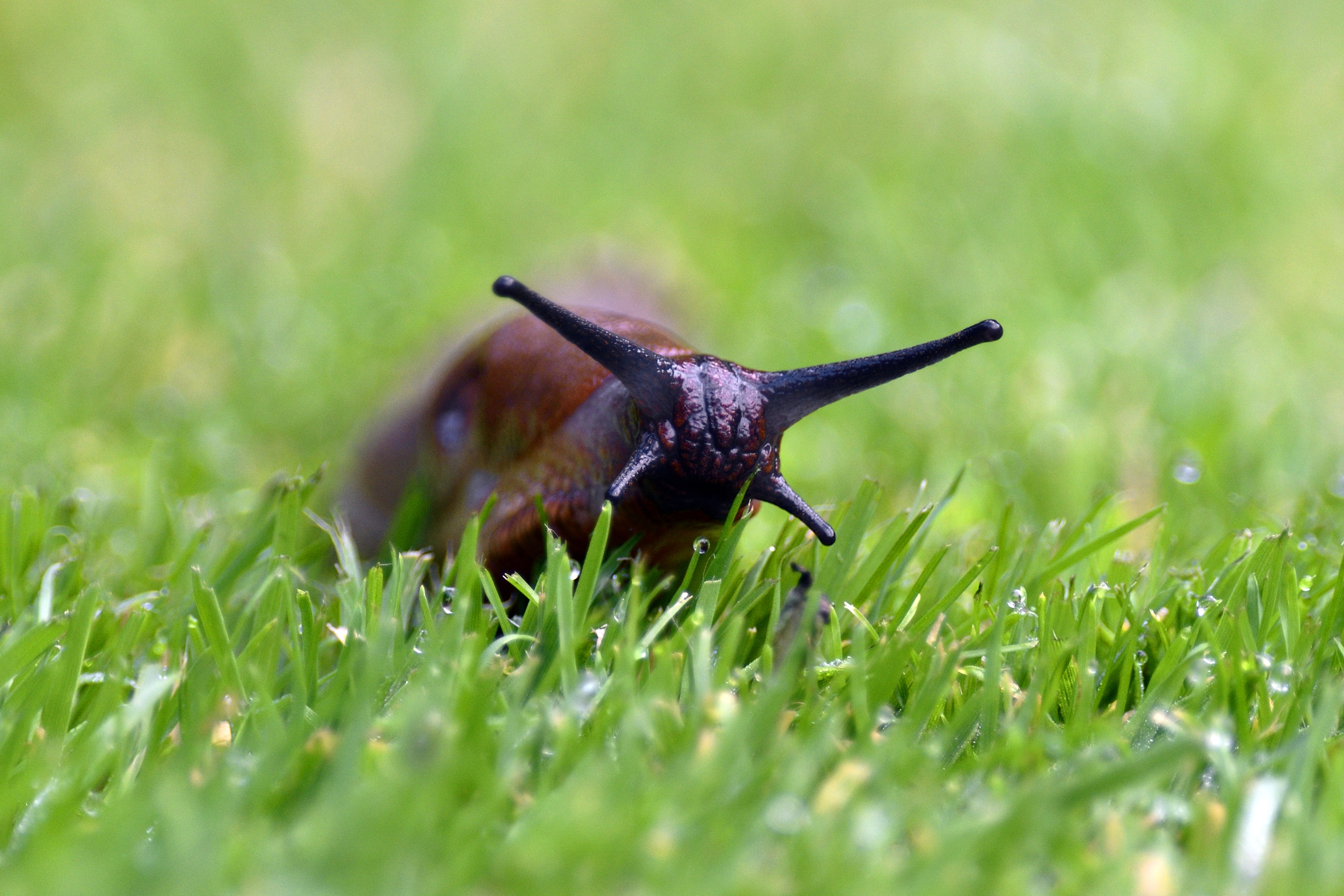Alan Titchmarsh: I've tried every slug control known to man, and these are the only things that have ever worked for me
Alan Titchmarsh is as charming, warming and friendly a man as anyone you'll ever meet. Unless, of course, you're a slug... in which case you'll awaken his ruthless side.


With their squeaky, succulent leaves, it’s no wonder hostas are seen as five-star hotels by slugs and snails. In a damp spring, the marauding molluscs await their moment, honing to perfection their rasping mouthparts so that they can make unbelievable inroads during the space of a single soggy evening. This year, we had a dry start to spring and many hostas managed that crucial spearing of the soil with their tightly scrolled leaves unfurling in pristine condition. Then came the rains and the slugs and snails woke up, but at least we — and our hostas — had a head start.
Like most gardeners, I have tried just about every slug control known to man. I long ago stopped using metaldehyde-based slug pellets, which left the pests writhing in agony and the birds and the ever-rarer hedgehog facing a poisoned diet. The pleasure of hearing a song thrush use a stone as an anvil to crack open a snail for a luncheon of fresh escargot is one of this wildlife gardener’s favourite sounds.
I bridled a while ago when it was suggested that ‘slugs are our friends’ and that out of the 40-odd species that inhabit our gardens only four — the common garden slug, the grey field slug, the large red/black slug and the common keeled slug — attack our plants.
Fine. There may only be four species, but they are common. That means there are a lot of them. They are not and never will be my friends. They are a vital part of the food chain in the garden and that is a situation I will grudgingly live with, which is why it does my heart good to see the moorhens who live on the edge of our wildlife pond having an away day and prowling the border that houses Japanese maples underplanted with hostas in search of a snack or, on a rainy day, a hearty meal.
Crushed eggshells, holly leaves, sharp grit, gravel and even sheep’s wool may be oft recommended as deterrents for both slugs and snails, but they are, at best, unreliable and more often than not totally ineffective. I do not drink enough Colombian or Arabica to carpet my hosta border in coffee grounds and, anyway, I’m not wild about imbuing my garden with an aroma redolent of Starbucks.
"Some varieties are recommended as being resistant — but the snails in my garden did not get the memo"
Apart from going out late in the evening and hand picking the pests (and lobbing them over the hedge onto the country verge), the only things that have worked for me are those rings of copper that resemble a vicar’s clerical collar and which can be pushed into the ground around individual plants to discourage the molluscs from coming any closer. They are reputed (if kept clean) to impart a kind of electric shock to any slug or snail attempting to scale their dizzying height of 1in. Pot feet can be effective if you plant your hostas in large containers, as only those slugs and snails with acrobatic skills — relatively few in number — appear to be able to navigate them.
Avoid placing potted hostas where their leaves can touch a nearby box bush, where snails love to shelter. At night, they’ll hop across the divide and gorge themselves before returning to their customary dorm for their daytime sleep.
Exquisite houses, the beauty of Nature, and how to get the most from your life, straight to your inbox.
Some hosta varieties are more prone to attack than others: those with especially thin and succulent leaves not only provide the best source of food, but are also very quickly turned into the plant equivalent of origami or lace curtains. I have found that ‘Devon Green’ and ‘Halcyon’ are among the least predated. ‘Sum and Substance’ is also recommended as being resistant, but the snails in my garden did not get the memo. There are more than 6,000 registered varieties and many more that are unregistered. The most massive — such as chest-high ‘Jurassic Park’ and ‘T-Rex’ — dwarf even the longer-established ‘Sum and Substance’, but there are also tiny border-edgers, including ‘Lemon Fizz’, that are enjoyable additions to shady beds and borders.
You could be forgiven for thinking that hostas are suitable only for damp, moisture-retentive soil and, indeed, they will thrive best in such hospitable conditions. Yet once the green- and blue-leaved varieties that are most suited to such spots have got their roots down they can be real toughies, even in such seemingly unsuitable situations.
I was thrilled to have a hosta named for me a few years ago. ‘Alan Titchmarsh’ is a variety with rich green leaves that have a creamy yellow streak right down the centre. I try not to imagine that it is in any way a reflection of my character. It is, I have noticed, rarely attacked by slugs and snails. Perhaps they have some respect for the gardener after all.
'Chatsworth: The gardens and the people who made them' by Alan Titchmarsh is out now (Ebury, £35)
Alan Titchmarsh is a gardener, writer, novelist and broadcaster.
